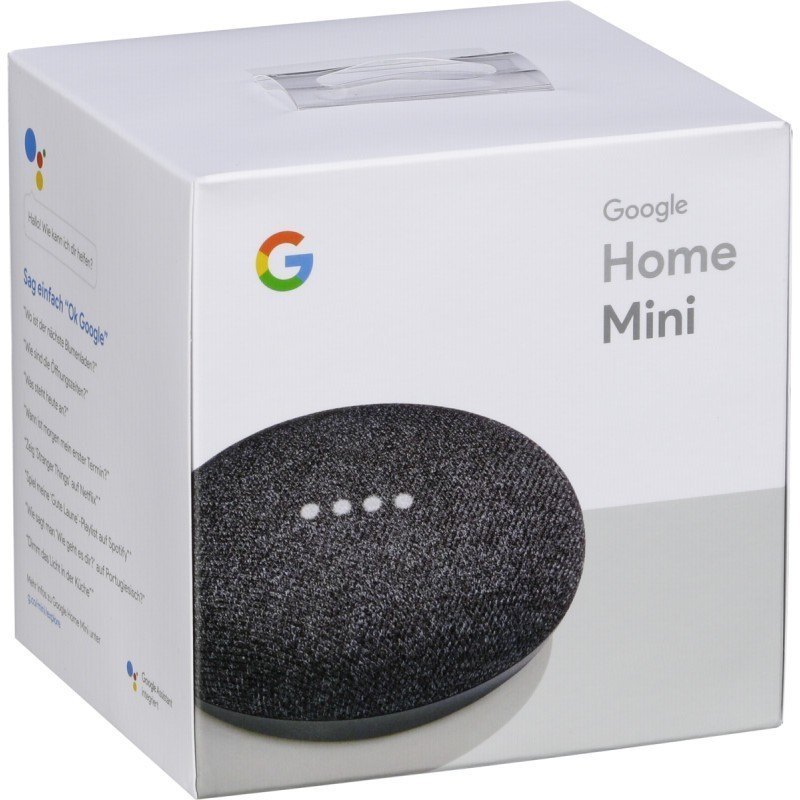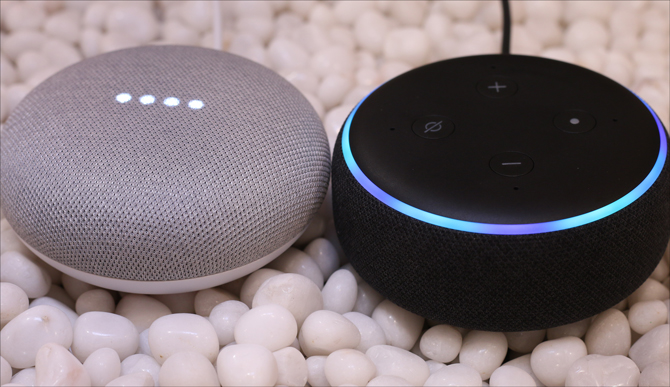Popular
Smart Home Devices – Google Home Mini

Smart Home Devices – Google Home Mini
I. Introduction to Smart Home Technology
Definition and Overview
Smart home technology, also known as home automation or domotics, refers to the integration of various internet-connected devices and systems within a residential setting to enhance comfort, convenience, security, and energy efficiency.
These intelligent devices are designed to communicate with each other and can be controlled remotely, typically through a central hub or a smartphone app. The concept of smart homes has gained immense popularity in recent years due to the growing prevalence of the Internet of Things (IoT) and advancements in artificial intelligence.
The primary goal of smart home technology is to streamline daily tasks and improve the overall quality of life for homeowners. By allowing seamless connectivity and automation, smart homes empower users to manage numerous aspects of their living spaces with greater ease and efficiency.
Evolution of Smart Home Technology
The idea of automating tasks within homes dates back several decades, but it is in recent years that smart home technology has seen significant advancements. Earlier iterations involved simple automation, like programmable thermostats or timers for lighting. However, the real breakthrough occurred with the advent of the IoT, which enabled devices to communicate and operate together through internet connectivity.
As technology progressed, smart home systems evolved from being standalone devices to interconnected ecosystems. The integration of voice-controlled virtual assistants, such as Amazon Alexa and Google Assistant, further revolutionized the way users interacted with their smart homes.
Benefits of Smart Home Integration
The widespread adoption of smart home technology stems from the numerous benefits it offers to homeowners. Some of the key advantages include:
1. Convenience: Smart homes allow users to control various devices and systems remotely, enabling them to manage household functions even when they are away. Whether it’s adjusting the thermostat, turning on the lights, or checking security cameras, everything can be accomplished through a smartphone or a voice command.
2. Energy Efficiency: Automation in smart homes helps optimize energy consumption by regulating heating, cooling, and lighting based on occupancy and preferences. This leads to reduced energy wastage and lower utility bills.
3. Enhanced Security: Smart home security systems offer a range of features, such as motion sensors, doorbell cameras, and smart locks, which bolster home security and provide peace of mind to homeowners.
4. Accessibility: Smart home technology makes it easier for people with mobility challenges or disabilities to control their living environment, promoting inclusivity and independence.
5. Customization: Users can customize their smart home setups according to their specific needs and preferences. From setting up personalized lighting scenes to creating automation routines, the possibilities for tailoring the smart home experience are virtually limitless.
6. Remote Monitoring: Smart home devices equipped with cameras and sensors allow homeowners to monitor their property remotely, providing an added layer of surveillance and protection.
7. Increased Property Value: With the growing demand for smart home features, integrating such technology can boost the resale value of a property.
As technology continues to evolve, the benefits of smart home integration are expected to expand further, making these homes an integral part of modern living. In the next section, we will delve into the world of Google Home Mini, a popular and versatile smart speaker that has found its place in numerous smart home setups.
II. Understanding Google Home Mini
A. Introduction to Google Home Mini
Google Home Mini is a compact and powerful smart speaker developed by Google. Launched as a part of the Google Home series, it serves as a gateway to Google Assistant, the company’s artificial intelligence-powered virtual assistant. The device offers a range of features and functionalities, making it an essential component of many smart homes.
The Google Home Mini has a sleek design that seamlessly blends with any living space. Its small size allows it to fit comfortably on shelves, countertops, or bedside tables, making it a discreet yet useful addition to your home. The device comes in a variety of colors, allowing users to choose one that best suits their decor preferences.
B. Key Features and Capabilities
1. Google Assistant Integration: The most prominent feature of the Google Home Mini is its integration with Google Assistant. With a simple voice command of “Hey Google” or “OK Google,” users can activate the virtual assistant and issue a wide range of commands and queries.
2. Voice-Controlled Smart Home Devices: Google Home Mini acts as a central hub to control compatible smart home devices. From adjusting smart thermostats, and dimming smart lights, to managing smart plugs, users can control various aspects of their smart home using natural language voice commands.
3. Music and Media Playback: The smart speaker enables users to stream music from popular services like Spotify, YouTube Music, or Google Play Music. With its decent audio quality, Google Home Mini can fill a room with your favorite tunes.
4. Information and Answering Queries: Google Home Mini leverages the vast knowledge base of Google to provide answers to questions on various topics, such as general knowledge, weather forecasts, sports scores, and more.
5. Daily Tasks and Reminders: Users can set up reminders, alarms, and calendar events using voice commands. Additionally, the Google Home Mini can provide daily briefings with personalized information, including weather updates, traffic conditions, and upcoming appointments.
6. Smart Home Routines: With the help of Google Assistant, the device allows users to create custom routines that execute multiple actions simultaneously. For example, saying “Good morning” can trigger the lights to turn on, the thermostat to adjust to a comfortable temperature, and receive a weather update.
C. Compatibility with Smart Home Devices
Google Home Mini boasts excellent compatibility with a wide range of smart home devices and brands. It works seamlessly with popular smart home ecosystems, such as Google Nest (formerly known as Nest Labs), Philips Hue, Samsung SmartThings, and many more. This interoperability ensures that users have the flexibility to choose from a vast selection of devices to suit their specific needs.
Setting up compatible smart home devices with Google Home Mini is typically a straightforward process through the Google Home app. This app serves as a central control hub, allowing users to manage all connected devices, create automation routines, and customize settings to optimize their smart home experience.
In the next section, we will explore the step-by-step process of setting up and configuring Google Home Mini, guiding users on how to unleash the full potential of this intelligent smart speaker within their smart home ecosystem.
III. Setting Up Google Home Mini
A. Unboxing and Initial Setup
When you first receive your Google Home Mini, unbox the device carefully, and ensure that all the components are present. The standard package usually includes the Google Home Mini itself, a power adapter, and a quick start guide.
To begin the setup process, plug the Google Home Mini into a power outlet using the provided power adapter. The device will light up and start initializing. You’ll notice four white LED lights on top of the device, indicating that it is ready for setup.
B. Connecting to Wi-Fi and Google Account
Next, download the Google Home app from the Google Play Store or the Apple App Store and install it on your smartphone or tablet. Launch the app and follow the on-screen instructions to connect your Google Home Mini to your Wi-Fi network. Make sure you are using the same Wi-Fi network that your smartphone or tablet is connected to.
Once connected to Wi-Fi, the app will prompt you to sign in with your Google Account. If you don’t have one, you’ll need to create a Google Account to proceed. Signing in allows Google Home Mini to personalize responses based on your preferences and access your linked services like calendars and reminders.
C. Configuring Settings and Preferences
After signing in, the Google Home app will guide you through the initial setup process. You’ll be asked to choose your preferred language, set the device location, and customize some privacy settings. It’s essential to review the privacy settings carefully and decide what data you want Google Home Mini to collect.
During the setup, you’ll have the option to link various music streaming services, such as Spotify, YouTube Music, or Pandora, to your Google Home Mini. This enables the smart speaker to access your music library and play your favorite songs upon request.
Once the setup is complete, your Google Home Mini is ready to use. You can start interacting with it by saying “Hey Google” or “OK Google,” followed by your command or query. For example, you can say, “Hey Google, what’s the weather today?” or “OK Google, set a timer for 10 minutes.”
IV. Voice Commands and Interactions
A. Using Voice Assistant (Google Assistant)
The Google Assistant, integrated into the Google Home Mini, is designed to understand natural language and respond to a wide range of commands and queries. You can use it to get information, play music, control smart home devices, set reminders, and much more. Simply address the device with the wake words, “Hey Google” or “OK Google,” and then state your request.
B. Controlling Smart Home Devices
Once your Google Home Mini is set up and connected to compatible smart home devices, you can effortlessly control them using voice commands. For example, you can say, “Hey Google, turn off the lights,” or “OK Google, set the thermostat to 72 degrees.”
C. Managing Daily Tasks and Reminders
Google Home Mini can help you stay organized by setting reminders and managing your calendar. You can ask it to set alarms, create events, and even check your schedule for the day. For instance, you can say, “Hey Google, remind me to water the plants at 4 PM,” or “OK Google, what’s on my calendar today?”
In the next section, we will explore the extensive list of compatible smart home devices and brands that work seamlessly with Google Home Mini, allowing you to create a comprehensive smart home ecosystem tailored to your preferences.
V. Expanding Your Smart Home Ecosystem
A. Compatible Smart Home Devices and Brands
One of the significant advantages of using Google Home Mini is its extensive compatibility with various smart home devices and brands. Google has collaborated with numerous manufacturers to ensure seamless integration with a wide array of smart devices. Some popular categories of smart home devices that work well with Google Home Mini include:
1. Smart Lights: Brands like Philips Hue, LIFX, and TP-Link offer smart bulbs and lighting solutions that can be controlled using voice commands through Google Home Mini. You can adjust brightness, change colors, and even set up lighting routines for different occasions.
2. Smart Thermostats: Devices such as Nest Thermostat and Ecobee smart thermostats are compatible with Google Home Mini. With voice commands, you can control the temperature in your home and optimize energy usage.
3. Smart Plugs and Switches: Brands like TP-Link, Wemo, and Gosund offer smart plugs and switches that enable you to turn traditional appliances into smart devices. You can control these devices remotely, schedule their operation, and reduce energy consumption.
4. Smart Cameras and Doorbells: Brands like Nest, Ring, and Arlo provide smart security cameras and video doorbells that work seamlessly with Google Home Mini. You can view camera feeds on compatible smart displays or cast them to a TV using voice commands.
5. Smart Locks: Devices from brands like August and Yale allow you to lock and unlock your doors using voice commands through Google Home Mini. You can also check the lock status and grant temporary access to visitors.
6. Smart Speakers and Displays: Besides Google Home Mini, other Google Assistant-enabled smart speakers and smart displays, like Google Nest Hub and Google Nest Audio, can be integrated into your smart home ecosystem.
B. Integrating with Smart Home Hubs
Google Home Mini can act as a central hub for your smart home devices, making it convenient to control multiple devices with a single voice command. However, it can also be integrated with other smart home hubs or platforms, providing even more flexibility and control.
For instance, if you have a smart home hub like Samsung SmartThings or Wink, you can link it with your Google Home Mini. This integration allows you to access a more extensive range of devices and customize automation routines that involve devices from different brands.
C. Automation and Customization
One of the most powerful aspects of a smart home ecosystem is the ability to create automation routines. With Google Home Mini and compatible smart devices, you can set up custom routines that trigger multiple actions simultaneously with a single voice command or at scheduled times.
For example, you can create a “Good Night” routine that turns off all lights, locks the doors, and adjusts the thermostat when you say, “Hey Google, good night.” Similarly, a “Morning” routine can turn on the lights, start playing your favorite morning playlist, and provide a weather update when you say, “OK Google, good morning.”
Automation not only simplifies daily tasks but also enhances the overall smart home experience, providing a level of convenience that traditional setups cannot match.
In the next section, we will explore essential security and privacy considerations when using smart home technology, including Google Home Mini, to ensure your data remains protected and your smart home network is secure.
VI. Security and Privacy Considerations
A. Data Privacy Concerns
As with any internet-connected device, data privacy is a crucial aspect to consider when using smart home technology like Google Home Mini. When you interact with the device, it processes voice commands and sends the data to Google’s servers to fulfill your requests accurately. While Google takes data privacy seriously, it’s essential to be mindful of what data is being collected and how it is used.
To address privacy concerns, Google allows users to review and delete their voice recordings. You can also disable voice recording entirely or set up retention policies in the Google Home app. Additionally, Google Home Mini has a physical mute switch that turns off the microphone to prevent voice interactions temporarily.
B. Safeguarding Your Smart Home Network
Securing your smart home network is vital to prevent unauthorized access to your connected devices and personal data. Here are some essential steps to enhance the security of your smart home ecosystem:
1. Strong Passwords: Always use strong, unique passwords for your smart home devices, Wi-Fi network, and any associated accounts or apps.
2. Firmware Updates: Keep your devices’ firmware and software up to date to ensure they have the latest security patches.
3. Secure Wi-Fi Network: Use WPA2 or WPA3 encryption for your Wi-Fi network and enable network password protection.
4. Two-Factor Authentication: Whenever possible, enable two-factor authentication for your Google Account and any other accounts linked to your smart home devices.
5. Guest Network: Consider setting up a separate guest network for visitors to keep your primary network and connected devices isolated.
6. Router Security: Change the default login credentials for your router and enable its built-in security features, such as firewall and intrusion detection.
C. Two-Factor Authentication and Account Security
Two-factor authentication (2FA) adds an extra layer of security to your Google Account. When enabled, you’ll need to enter a verification code sent to your mobile device whenever you sign in to your account from a new device or browser. This added step prevents unauthorized access even if someone manages to obtain your password.
To enable 2FA for your Google Account, go to your Google Account settings, navigate to “Security,” and follow the instructions to set up 2FA using your preferred method (text message, phone call, or a security key).
By implementing these security and privacy measures, you can ensure that your smart home, including Google Home Mini, remains protected from potential threats and intrusions.
VII. Comparing Google Home Mini with Other Smart Speakers
A. Comparison with Amazon Echo and Apple HomePod
When evaluating smart speakers, it’s essential to consider the options available in the market. Google Home Mini competes with Amazon Echo devices (powered by Alexa) and Apple HomePod (powered by Siri). Each platform has its strengths and weaknesses:
1. Google Home Mini: It excels in its integration with Google services, providing accurate and extensive information based on its robust search capabilities. Google Assistant’s natural language processing is also highly proficient, making conversations feel more natural.
2. Amazon Echo: Alexa is well-known for its extensive third-party skill integration, offering a wide range of capabilities beyond the built-in features. It has strong support for shopping and integrates well with Amazon services.
3. Apple HomePod: Siri’s integration with the Apple ecosystem is a key advantage for users who heavily rely on Apple products and services. The HomePod also offers impressive sound quality compared to the compact design of Google Home Mini.
The choice between these smart speakers largely depends on individual preferences, existing device ecosystems, and desired functionalities.
B. Strengths and Weaknesses
Google Home Mini’s strengths lie in its strong integration with Google services, accurate responses, and seamless compatibility with various smart home devices. It’s compact design and affordable price make it a popular entry point for those new to smart home technology.
However, it may not be the best option for users deeply invested in the Amazon or Apple ecosystems. Additionally, some users might be concerned about data privacy issues associated with Google’s services.
VIII. Future of Smart Home Technology
A. Emerging Trends and Innovations
The smart home technology landscape is continuously evolving, and several emerging trends are shaping its future:
1. Increased Interoperability: Efforts are being made to enhance interoperability among smart home devices, allowing them to work seamlessly together regardless of brand or platform.
2. AI Advancements: Improvements in artificial intelligence will enable smarter and more context-aware voice assistants, enhancing their ability to understand and respond to human interactions.
3. Energy Efficiency: Smart home technology will continue to focus on optimizing energy usage through intelligent automation and energy management solutions.
B. Predictions for the Smart Home Market
As technology becomes more accessible and consumer demand increases, the smart home market is expected to grow significantly. Predictions include:
1. Expansion of IoT Devices: The number of IoT devices connected to smart homes will continue to surge, with a wide variety of devices catering to different needs.
2. Integration with Smart Cities: Smart home technology will be integrated with smart city infrastructure, creating more interconnected living spaces.
3. Enhanced Security Measures: As smart homes become more prevalent, security measures will advance to protect against cyber threats and potential vulnerabilities.
C. Impact on Everyday Living
The integration of smart home technology is set to redefine everyday living. With increased automation and personalized experiences, smart homes will offer enhanced comfort, convenience, and efficiency. From saving time on household chores to providing valuable insights into energy consumption, smart home technology will transform the way we live and interact with our living spaces.
IX. Tips for Optimizing Your Smart Home Experience
As you immerse yourself in the world of smart home technology and Google Home Mini, here are some additional tips to optimize your smart home experience:
1. Explore Third-Party Integrations: Beyond the built-in features, explore third-party integrations and skills available for your Google Home Mini. Many developers create custom actions or skills to expand the device’s capabilities, allowing you to perform even more tasks with voice commands.
2. Create Custom Voice Commands: Take advantage of the Google Home app to create custom voice commands for your frequently used routines or actions. Personalizing your commands can make interactions with your smart home feel more intuitive and enjoyable.
3. Grouping Devices: Group compatible smart home devices together to create zones within your home. For example, you can group smart lights in the living room and bedroom separately to control them simultaneously with a single voice command.
4. Utilize Smart Home Scenes: Scenes or routines within the Google Home app enable you to activate multiple actions across various devices with a single command. Experiment with different scenes to streamline your daily activities.
5. Regularly Review Connected Devices: Periodically review the connected devices in the Google Home app to ensure everything is functioning as expected. Remove any devices that you no longer use or need to keep your smart home setup organized.
6. Voice Match for Personalization: If multiple people use Google Home Mini in your household, consider setting up Voice Match. This feature allows the device to recognize individual voices, providing personalized responses and access to specific information.
7. Explore Smart Display Options: If you find yourself using Google Home Mini frequently for visual information, consider upgrading to a smart display, such as Google Nest Hub. Smart displays provide visual feedback, including weather forecasts, recipe instructions, and video playback.
8. Optimize Wi-Fi Coverage: To ensure smooth operation and reliable connections for your smart home devices, make sure you have adequate Wi-Fi coverage throughout your home. Consider using Wi-Fi extenders or mesh systems if necessary.
9. Voice Shopping and Ordering: With Amazon and Google’s voice shopping capabilities, you can easily reorder items or add items to your shopping list using voice commands. Be cautious and set up a PIN for voice purchases to prevent accidental orders.
10. Embrace Continuous Learning: Stay up-to-date with the latest developments in smart home technology and Google Home Mini. Both platforms receive regular updates, and new features and improvements are introduced over time.
With these tips, you can make the most of your smart home technology, creating a seamless and efficient living environment that caters to your needs and preferences.
As technology advances and our homes become smarter, the possibilities for improving our daily lives through automation and integration are limitless. Embrace the convenience, comfort, and efficiency that smart home technology offers, and enjoy the journey as your home evolves into a smarter, more connected space.
X. Conclusion
In conclusion, “smart home technology” and “Google Home Mini” are integral parts of the ever-evolving digital landscape. Smart homes offer a myriad of benefits, including convenience, energy efficiency, and enhanced security. Google Home Mini, with its compact design and integration with Google Assistant, provides an entry point into the world of smart home devices, allowing users to control various aspects of their homes with simple voice commands.
As you delve into the realm of smart home technology, remember to prioritize data privacy and network security. By adopting best practices and staying informed about the latest trends, you can ensure a seamless and safe smart home experience.
With ongoing advancements and emerging innovations, the future of smart home technology promises a more interconnected and efficient living environment. As we embrace these changes, smart homes will continue to enrich our lives and redefine the way we interact with technology and the spaces we call home.













